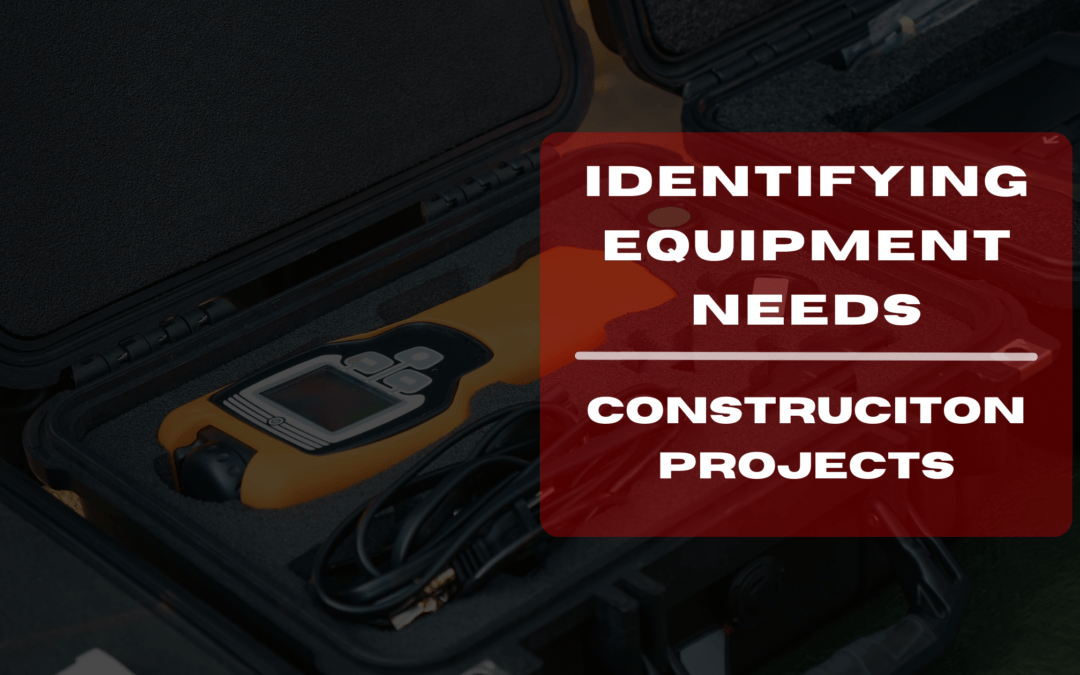Identifying Equipment Needs in Construction Projects
In the dynamic world of construction, precision is the name of the game. Whether it’s erecting skyscrapers, building bridges, or renovating homes, the right equipment can make or break a project. So, how do construction professionals ensure they have the right tools in their arsenal? The answer lies in a meticulous process known as Equipment Needs Analysis. In this article, we’ll delve into this crucial aspect of project resource management and explore its significance in project planning.
Table of Contents
The Road to Construction Success
Every construction project, regardless of its scale, begins with a vision. From towering structures to infrastructure marvels, every brick and beam is carefully planned. Central to this planning is Equipment Needs Analysis, a systematic process that guides the identification of the necessary equipment for a project. Let’s break down the steps involved:
Step 1: Project Assessment
At the heart of Equipment Needs Analysis is a thorough project assessment. This involves diving into the project’s details, understanding its scope, objectives, and specific requirements. It’s about getting to know the project inside and out. This includes reviewing project plans, blueprints, and technical specifications.
Step 2: Equipment Categorization
With a clear understanding of the project, the next step is to categorize equipment. Construction equipment comes in various shapes and sizes, from earthmoving machinery to heavy lifting cranes. Categorization helps in identifying what types of equipment will be needed to fulfill project tasks efficiently.
Step 3: Quantity Estimation
Quantity matters in construction. Estimating the number of each type of equipment required is a critical step. Factors such as project size, deadlines, and expected workloads come into play here. This step ensures that the project has the right quantity of machinery for each task.
Step 4: Technical Specifications
No two construction projects are exactly alike. Each project has unique demands, and equipment must meet these demands. This step involves specifying the technical requirements for each piece of equipment. Details such as power, capacity, size, and any special features needed are carefully considered.
“Efficiency is doing better what is already being done.” – Peter Drucker
This quote by Peter Drucker perfectly encapsulates the essence of Equipment Needs Analysis in construction. It’s about doing things better, and in this case, it’s about optimizing resource allocation, controlling costs, and ensuring safety.
Optimized Resource Allocation
When equipment needs are accurately assessed, resources can be allocated optimally. Imagine a construction project as a puzzle; each piece of equipment is a puzzle piece. To complete the puzzle efficiently, you need the right pieces in the right places. Accurate equipment assessment ensures just that, minimizing downtime and avoiding resource shortages.
Cost Control
Construction projects come with budgets, and sticking to them is essential. Accurate equipment assessment plays a pivotal role in budgeting. Project managers can estimate equipment-related costs accurately, including purchase, maintenance, fuel, and labor. This control prevents cost overruns, ensuring financial stability throughout the project’s lifecycle.
Project Timeline
Time is money in construction, and project timelines are sacrosanct. Having the correct equipment in place ensures that project timelines are met. Delays due to equipment shortages or inadequacy can be avoided, keeping the project on schedule. This not only pleases clients but also enhances the overall reputation of the construction team.
Safety First
In construction, safety is non-negotiable. Accurate equipment assessment enhances safety on the construction site. Having the right equipment for specific tasks reduces the risk of accidents. It ensures that every piece of machinery is up to the task and compliant with safety regulations. A safe work environment is not only a legal requirement but also a moral obligation.
Conclusion
In the world of construction, success is built on a foundation of meticulous planning and execution. Equipment Needs Analysis is the cornerstone of this success. By understanding the project, categorizing equipment, estimating quantities, and specifying technical details, construction professionals ensure they have the right tools for the job.
To paraphrase Peter Drucker, efficiency in construction is doing better what is already being done. Accurate equipment assessment leads to optimized resource allocation, cost control, adherence to project timelines, and enhanced safety. It’s the key to unlocking success in construction, ensuring that projects are not just completed but completed with excellence.
In the end, it’s not just about bricks and beams; it’s about building a better future, one construction project at a time.

